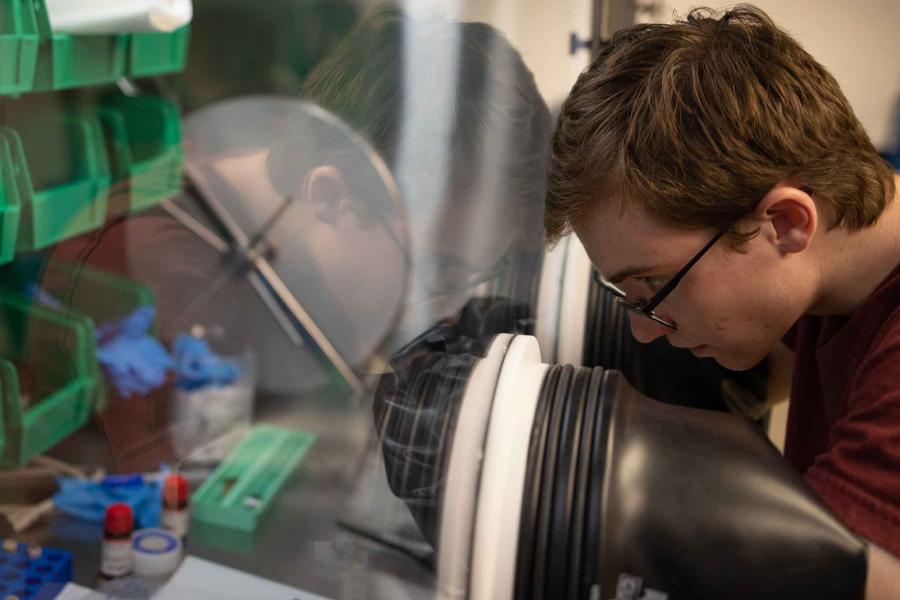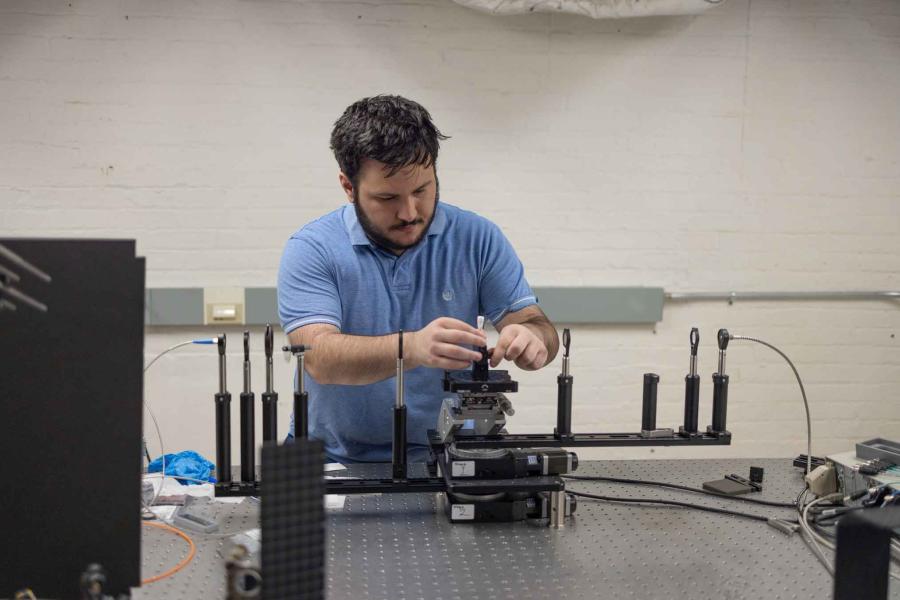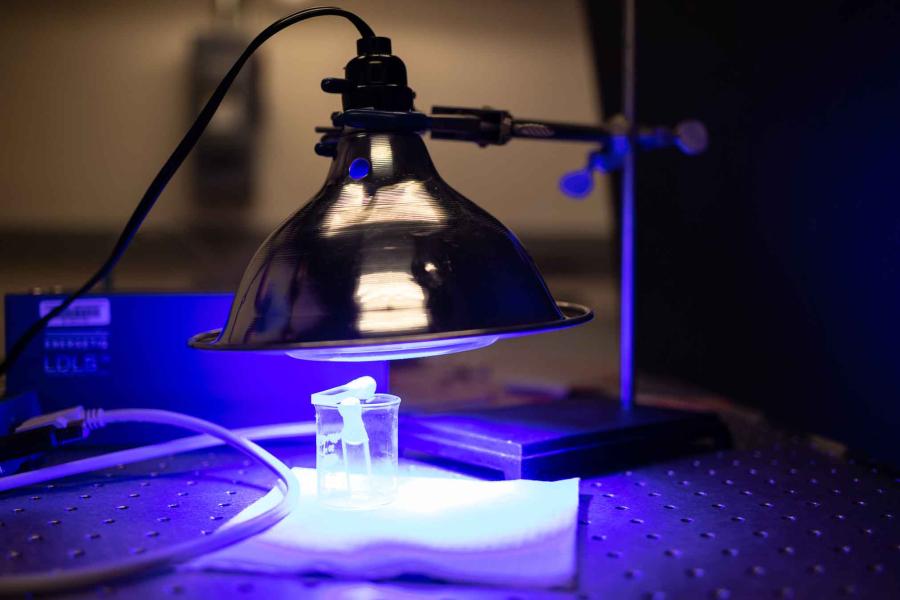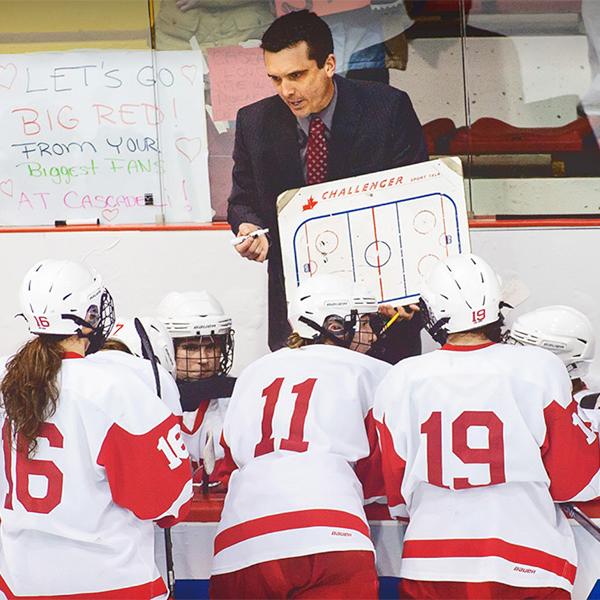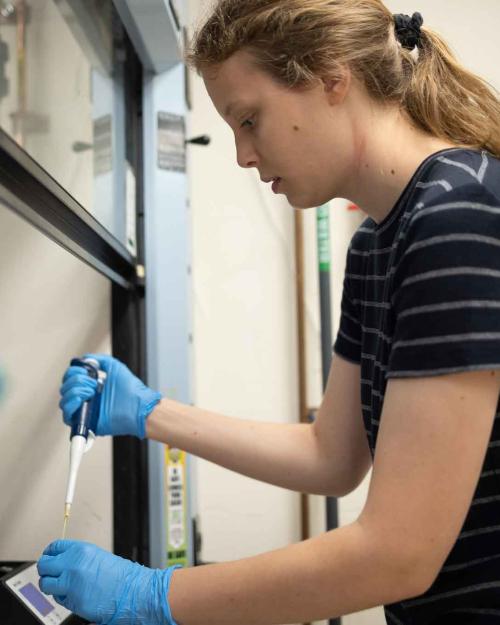As part of Ryan Pinard ’25’s summer research project, he’s hoping to create a chemical sample that’s never existed before —with a cavity that could hold liquid between two reflective surfaces. The sample could make it possible to use various organic materials to shape the future of solar or change the way chemical reactions are performed.
He’s one of seven undergraduate researchers on campus this summer in the lab of Andrew Musser, assistant professor of chemistry and chemical biology in the College of Arts & Sciences. Pinard’s work, as well as the work of Anthony Lara ’25 and Bea Pence ’24, is supported by grants from the Nexus Scholars Program.
Nexus Scholars are awarded funding for their summer work and take part in various classes and professional development workshops and career exploration events during the summer. The program is made possible through a number of alumni gifts, including from Elaine Wong ’97 and Fritz Demopoulos.
Musser’s lab has grown from three undergrad researchers last year to 15 this year, an expansion that Musser says was aided in part by Nexus Scholars Program funding and his own desire to open his lab to more undergrads. His lab also includes six graduate students and two postdoctoral researchers. His research uses ultrafast laser spectroscopy to understand how organic semiconductors behave when they absorb and emit light.
“I’ve always been attracted to projects at the intersection of physics and chemistry,” Musser said. Adding more undergraduates to the lab has helped him to think about shorter-term projects that can be achieved over a summer or a semester. “It’s also good training for the graduate students to help organize another person’s work.”
Pence began working in Musser’s lab last semester, but for Pinard and Lara, who just finished their first year at Cornell, this is their first research experience.
Lara is animated talking about his work creating various sample iterations of a molecule in the perylene diimide family, then testing those samples using lasers to reveal their capabilities. The ultrafast laser in Musser’s lab will allow him to study the molecule in ways it hasn’t yet been studied, adding novel information to the field.
“A lot of papers that I’ve read have done ultrafast transient absorption on our molecule, but on the longer picosecond timescale,” Lara said. “Our laser can reveal some extremely fast kinetics that are going on in the molecule.”
Pence is studying a more classic way of creating the cavity samples, laying down one layer of mirror, then a film of a polymer, and then another mirror on top. Her samples will help the group to develop a new kind of laser.
Each undergrad student works under a graduate student or postdoc, but Musser meets with each undergrad weekly and they also attend group meetings.
“When they start out, it takes some work to teach them about our research, but soon they become quite competent and contribute directly to the lab,” Musser said. ”A lot of what we do is making and comparing different samples, so having more hands available to do that is very helpful.”
